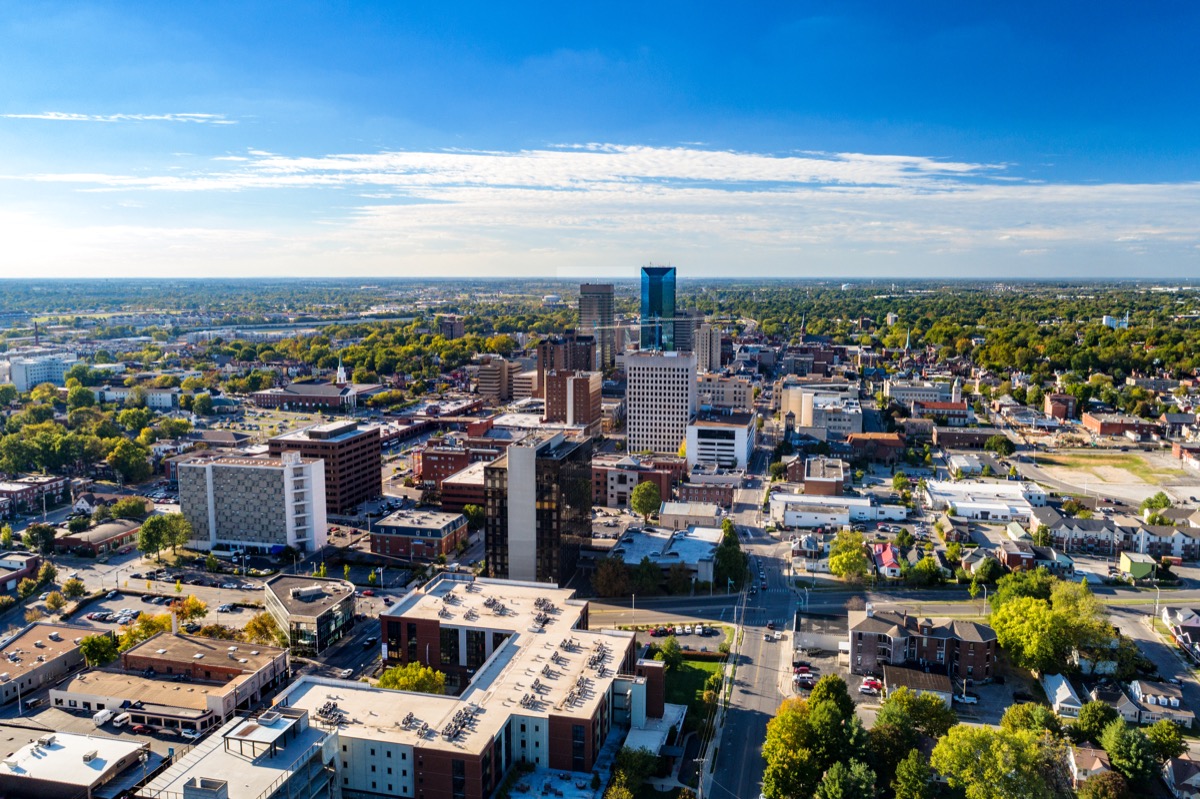On Sunday’s edition of Face the Nation, Gottlieb predicted that the height of the pandemic is still to come. “I think the apex in the epidemic states right now, the centers of the epidemic, which [are] California, Texas, Arizona, and Florida, could be two to three weeks away,” he said. And with those states still a concern, other epicenters continue to pop up throughout the country. “We’re seeing record numbers of cases, rising hospitalizations, and really a shifting of the center of the epidemic, potentially, in the United States,” Gottlieb said. “And this just portends more trouble for the fall and the winter that we’re going to be taking a lot of infection into the fall—that we’re never going to really be able to come down.” Read on to discover the states that have Gottlieb concerned. And for more on the future of the coronavirus, check out COVID “Will Be Worse"in August and September, Says Former CDC Director. According to new data from a COVID risk level map developed by researchers at the Harvard Global Health Institute (HGHI), Georgia has seen at least 33 new cases per day per 100,000 residents. The state began to see a steep increase in cases at the end of June, and they have routinely broken daily records since. Georgia reported its highest number of new cases, 4,904, on July 10, according to The New York Times (NYT). As the state inches closer to 140,000 total cases of COVID-19, officials continue to operate on different pages. After Atlanta mayor Keisha Lance Bottoms recently attempted to put a mask mandate in place, Gov. Brian Kemp moved to sue the city, claiming Bottoms doesn’t have the power to implement such a mandate, according to The Washington Post. For more on Georgia and other high-risk regions of the country, check out 11 States Where Locking Down Again Is Absolutely Necessary.ae0fcc31ae342fd3a1346ebb1f342fcb While Tennessee’s numbers are not quite as astronomical as Georgia’s, the state did see a significant shift in the past month. According to NYT data, Tennessee’s highest reported day was on July 13, with 2,509 new cases. According to HGHI data, the state is seeing at least 30 new cases per day per 100,000 residents. To curb the spread, Gov. Billy Lee signed an executive order giving mayors the authority to create local mask ordinances, according to a press release from the Governor’s office. However, according to Tennessean, “Local authorities have been struggling with their abilities to impose restrictions intended to curb the spread of COVID-19 since its earliest days in the state.” For more up-to-date information, sign up for our daily newsletter. Although Missouri’s numbers are just a fraction of what’s been reported in some other areas—with the current total at 35,316 cases of COVID—the state has seen a significant uptick since mid-June. According to NYT data, Missouri’s highest daily tally was on July 14 when the state reported 1,036 cases—the only instance in which the the daily total surpassed 1,000 cases. According to HGHI data, Missouri is averaging about 11 new cases per 100,000 people per day, which ranks the state below the highest risk level. However, the state’s numbers have more than doubled in the last month, which is cause for concern. With the lowest number of cases on this list, 23,742, Kentucky may seem like they are in a good position. However, the state’s cases have almost tripled over the past month. HGHI data shows that Kentucky is currently reporting about nine cases per 100,000 residents daily, but that could swiftly change if action isn’t taken. According to the Lexington Herald-Leader, Kentucky reported their record number of new daily cases on July 19 with 979—on June 19 they reported only 238 cases. Gov. Andy Beshear called this staggering jump a “shocking wake-up call” and urged residents to wear masks and maintain social distance. To learn more about current U.S. hot spots, These States Are in the White House’s “Red Zone” Says Leaked Document. “Things are going to get worse before they get better,” Gottlieb said during an earlier appearance on Face the Nation. “I think, in the South, you’re likely to see an extended plateau.” And for more on Gottlieb’s predictions, check out This Is When COVID Will Peak in the South, Former FDA Chief Warns.




